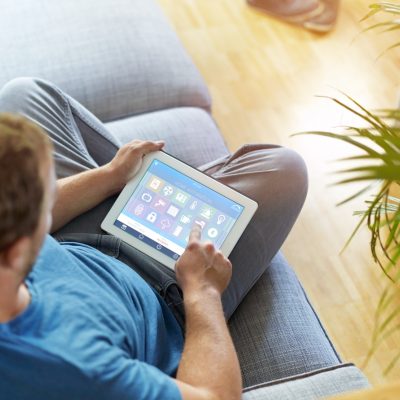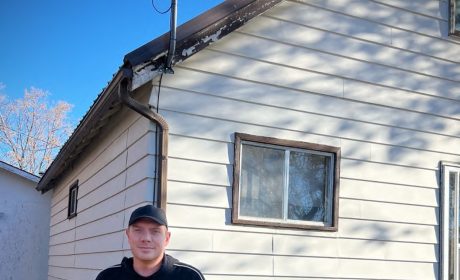Security for your connected home


In September 2022 Xplornet became Xplore. Read more here.
Virtual assistants, security cameras, thermostats and even the lock on your front door can be controlled by your phone over your Wi-Fi network, but is it safe to use? Here are some tips to ensure that your network and your devices are safe.
Protect your Wi-Fi network
Providing your neighbours with free Wi-Fi won’t be the only result of having an unprotected network. According to the Government of Canada, you could be giving Wi-Fi trespassers access to your browsing history, payment information, passwords, emails and more. This is why it’s important to make protecting your Wi-Fi network a priority.
WEP, WPA or WPA2 – do you know which encryption tool you’re using to secure your wireless connection? Although these terms can look daunting to try to figure out it will pay off to make sure that you are using the best method to protect your home Wi-Fi network. The brief breakdown is that WEP is the least secure method that you can use, WPA is slightly more secure, and WPA2 and WPA-PSK are recommended by most industry experts as they use a stronger encryption method. Follow these guidelines to make sure you are doing all that you can to secure your home wireless network.
Use a password manager
Although using your pet’s name followed by some numbers (ie. Cuddles123) as a password may be easy for you to remember…it will also be easy for someone else to guess. Don’t leave yourself vulnerable to network attacks by using common, easily guessed passwords on your home’s connected devices and their related apps.
We suggest using a password manager like 1Password that can be added as an application to your browser and to your mobile device. 1Password will create long-form, unique passwords and will store them safely for you in your own vault that can only be accessed with your master password. It’s basically like having an online bank vault for your passwords! Remembering one hard password is much easier than trying to track all of them in a notebook, in an email or in a Word document. If you’d like to review other options take a look at CNET’s list of the best password managers.
Opt-in for Two-Factor Authentication
Add an extra layer of protection for your smart home devices and your online accounts (ex. Gmail and Facebook) by opting-in for two-factor authentication whenever possible. This type of protection ensures that only you have access to all of the information needed to sign into the account. It will not only ask you for your basic email and password but it will also ask you for a second piece of information, whether it be something only you know (like your pet’s name) or a generated code that they send to you by email.
The code is usually sent to you by an added application like Google Authenticator. You can set up this two-factor authentication for your Gmail and Facebook accounts by using Google Aunthenticator 2-step verification.
Connected home devices are supposed to make your life easier and by following the tips above you can rest assured that you can use them.
You can Check Internet Packages available at your home here!


